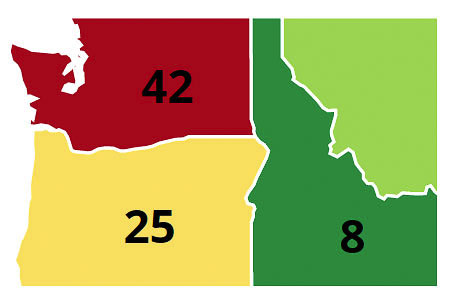Mariya Frost of the Washington Policy Center shares that lawmakers should consider meaningful reforms before giving the state Department of Transportation additional tax revenue
Mariya Frost
Washington Policy Center

The Reason Foundation has released its 26th Annual Highway Report, in which Washington State ranks 42nd in the nation in highway performance and cost-effectiveness. For comparison, Washington ranked better than California (45th) but worse than similar states like Oregon, which ranked 25th, and Colorado, which ranked 37th. Neighboring state Idaho ranked 8th.
This year’s ranking is an improvement from last year, when Washington ranked 45th. The reason for that change had to do with improvements in Washington’s better rankings – urban fatality rate (7th), urbanized area congestion (10th), and urban Interstate pavement condition (27th). Urbanized area congestion data is from 2020, when traffic was low due to COVID.
Washington ranks 46th in rural interstate pavement condition and 12th in structurally deficient bridges.

Similar to last year, Washington’s worst rankings are in maintenance disbursements per mile (49th) and administrative disbursements per mile (47th). The maintenance disbursement is worse than last year, when it was 47th. Maintenance disbursements are the costs of “routine upkeep, such as filling potholes and repaving roads.”
Washington spends a whopping $56,847 per mile of state-controlled road, which is nearly four times more than comparable Oregon at $15,875. This is pretty remarkable. Why is WSDOT’s spending so much higher than ODOT’s? WSDOT should answer this question as they seek additional money for maintenance and preservation this coming legislative session. Reason’s report and Washington’s routinely poor ranking in maintenance disbursements and pavement conditions suggests there is a need for WSDOT to improve how it manages public money.
One of the authors of the study, Baruch Feigenbaum, recommends that “Washington should try to have its high costs better translate into good pavement condition…While it may be challenging for Washington to reduce its spending, if the state could improve its pavement quality to the national average, it would move up in the overall rankings.” He adds, “As is, the state has the worst of both worlds: high spending and poor roadways.”
Mariya Frost is the director of the Coles Center for Transportation at the Washington Policy Center.




